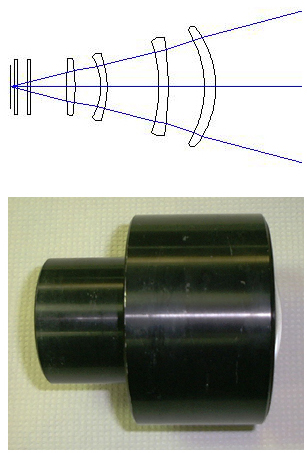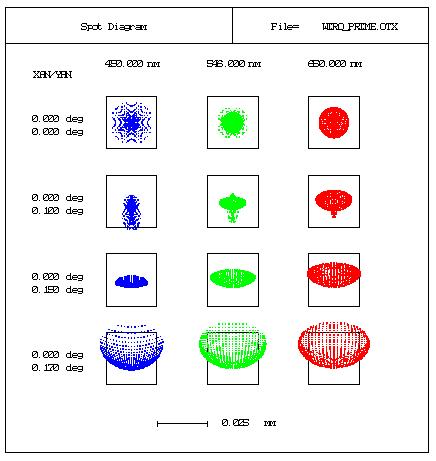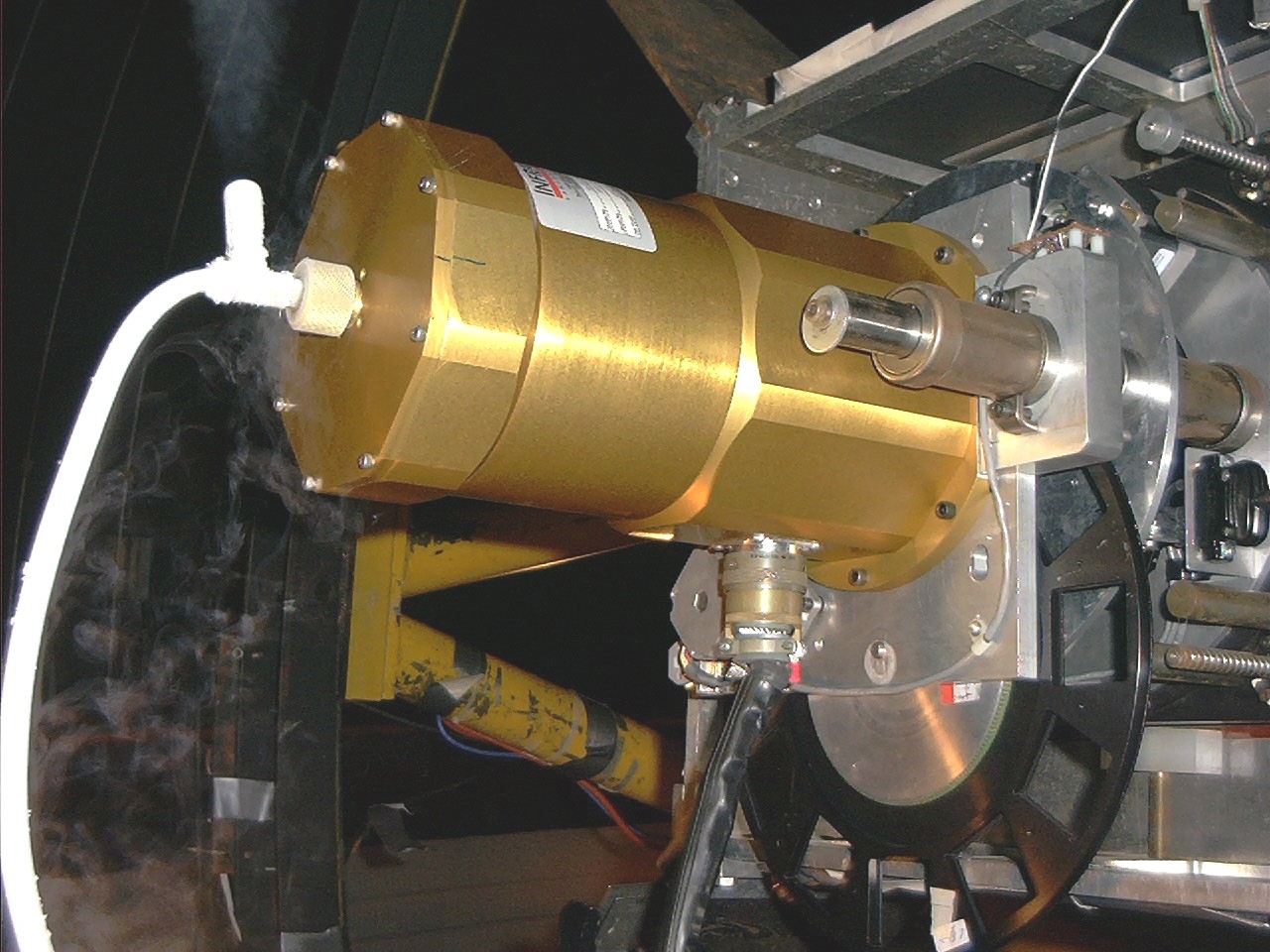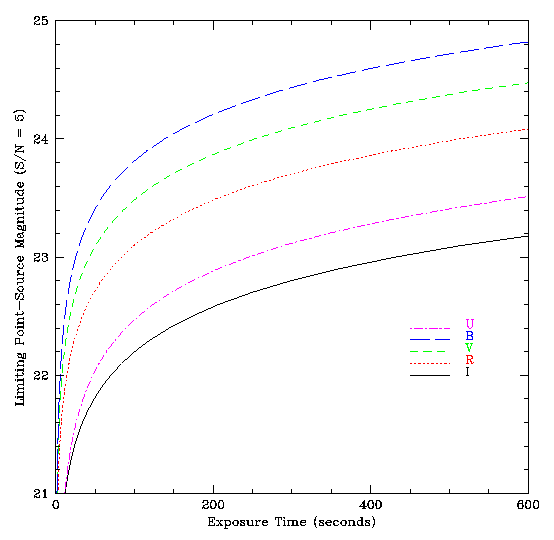

WIRO Prime is the first of a new generation of facility instruments for the Wyoming Infrared Observatory (WIRO). Although the 2048x2048 detector is an optical CCD this instrument will be ideal for several wide-field imaging surveys planned at WIRO. The camera features two mechanical stages which are stepper-motor contolled in order to enable: 1) positioning of the prime focus corrector relative to the primary mirror, and 2) focusing of the CCD camera. The mechanical design is based upon an earlier instrument built by Ed Loh of Michigan State University. The University of Wyoming obtained a new, larger CCD and the process of modernizing the MSU instrument was undertaken by Michael Pierce and Philip Haynes. Steve Hodder was the primary machinist for the project and James Weger developed the electronic design. Our upgrades include larger stepper motors controlled with a Compumotor 6k4 controller and improved filter wheels with Hall-effect positioning sensors. The instrument uses the original 4-element Wynne corrector designed by Loh and which provides a well-corrected field of 20 arc-min diameter at f/2.1.
Optical Design


The left figure shows the optical design of the 4-element Wynne corrector. The cross section at top left shows the light from the primary mirror coming from the right and entering the corrector (shown at bottom) with the filter, dewer window, and detector to the left, respectively. The right figure shows a "spot diagram" calculated for three wavelengths and four off-axis field angles. The square boxs (1.1 arcsec) show a 2x2 pixel region with the Marconni/EEV CCD.
Mechanical Design
The figure below shows the re-designed Michigan State prime-focus assembly
mounted at the WIRO prime focus. The gold dewer is visible in the
center with the filter wheel extending below the dewer. The assembly
features two movable stages: the top-most stage supports the dewer and
is used for focusing. The lower stage supports the prime focus corrector
and allows it to be positioned relative to the primary mirror in order
to be placed at the "sweet spot" of the design. The center stage
holds the filter wheel (see below).

CCD Camera
The CCD camera features a Marconni/EEV 2048x2048 detector with 13.5 um pixels. This results in a field of view of 20 arcmin with 0.55 arcsec/pixel. The detector is mounted within a dewer built by Infrared Labs and is controlled using electronics built by Bob Leach (Astronomical Cameras). The details can be found here.
Available Filters
The WIRO prime focus camera features a 12 position filter wheel capable of accepting either 2" or 50 mm square filters up to 6 mm thick. At the present time there are three filter wheels and the table below shows the currently available filters. Note that thin inserts must be used with 50 mm filters if they are used in the 2" wheels.
Measured Performance
The figure below shows the 5-sigma limiting magnitude as a function of time for the standard Johnson bandpasses. These are theoretical curves based upon the QE of the CCD and the filter response curves assuming a seeing of 1 arcsec and no moon light. The limited data obtained to date suggest that these curves are accurate to about 0.1 - 0.2 mag.

Measured Performance
The following photometric zero-points were measured by M. Pierce and R. Berrington:
Bandpass Zero-Point
Extinction
Color-Term
B
-25.082 +- 0.009 0.295 +- 0.004
-0.117 +- 0.005
V
-25.341 +- 0.009 0.193 +- 0.004
+0.091 +- 0.004
R
-25.373 +- 0.011 0.139 +- 0.004
+0.163 +- 0.005
I
-24.638 +- 0.027 0.061 +- 0.011
-0.037 +-
0.013
User Interfaces
WIRO-Prime is controlled through two graphical interfaces, both of which currently run in the Windows environment. The figure below at left shows the instrumental control interface. This is a Visual-Basic application which interfaces with a Compumotor 6K stepper motor controller and is used to position the various focusing stages and the filter wheel. The figure below at right shows the CCD Camera user interface (Voodoo) provided by Astronomical Cameras for control of the CCD camera. These two aplications are started automatically when the observer logs onto the WIRO instrument control computer. If by any chance they are shut down due to a problem, they can be re-started from the observer's desktop using the icons on the "start-bar" located at the bottom of the desktop.
![]()
WIRO-Prime Interface
The WIRO-prime interface controls three stepper motors on the prime focus stage. These allow for: 1) changing filters, 2) focusing the CCD relative to the correcor, and 3) positioning the prime focus corrector along the optical axis, relative to the primary mirror. Only the first two motors are normally used, the corrector positioning should be set when the instrument is mounted at prime focus. The desired filter can be selected from a pull-down menu and the position will then be highlighted in the filter text box. Note: the user must hit the "go" button to complete the filter move command.
Voodoo Interface
The Voodoo interface is started automatically when the observer logs in but can also be started from the windows desktop. Once it successfully connects to the CCD controller the interface window is opened and appears on the desktop (see the figure below).
![]()
Select the "setup" option and verify that all the options are selected. Click on "apply" and verify that the CCD connection is established. Check the CCD temperature and verify that the dewer is cooling down or has reached the recommended operating temperature of -120 C. Be sure to check that temperature regulation is enabled. At this time the user should verify that the binning is correct (binning tab) and that any region of interest (or full frame) is correctly set. The user should also examine the main interface and pay particular attention to:
1) ensure that the correct path (i.e. directory or folder) is set for the data to be saved,
2) ensure that the "automatic increment" box is set so that the data files are not over-written.
Getting Started
(this section is under currently development)
Online
Manual (not written yet!)
Last Modified 9/10/2002 by Michael Pierce (mpierce@uwyo.edu)